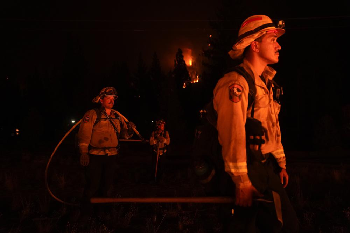What Are The Key Decisions Wildfire Fighters Must Make?
 We all see news stories about major wildfires that go from completely uncontained, to 10%, 30%, and eventually, completely contained. But how does this happen? What are the important decisions and tradeoffs firefighting management must make in containing fires and minimizing the loss of property and human life – while keeping the firefighting crew as safe as possible?
We all see news stories about major wildfires that go from completely uncontained, to 10%, 30%, and eventually, completely contained. But how does this happen? What are the important decisions and tradeoffs firefighting management must make in containing fires and minimizing the loss of property and human life – while keeping the firefighting crew as safe as possible?For example, when should a fire be allowed to burn, especially if it was caused naturally and/or is not threatening structures? What types of firefighting resources should be deployed, including aircraft? How many ground personnel should be deployed, and where? When should additional personnel be called in? What technology can be used, from overflying aircraft using sophisticated sensors collecting valuable data to drones? How can “hot spots” be detected, particularly after the fire has been extinguished, so that it won’t flare up again?
Furthermore, what time of day is best? Hint – it’s usually not in the middle of a hot day. How and where should fire lines be created?
From a safety standpoint, when should evacuation orders be issued, and for which areas? While those are designed to protect the public, there is a whole other set of decisions to protect the firefighters, such as when and where to “shelter in place”.
A minor decision, but one with wide implications, is how to name a fire!
Learn more about difficult firefighting decisions
See how FIELD helps train firefighters





